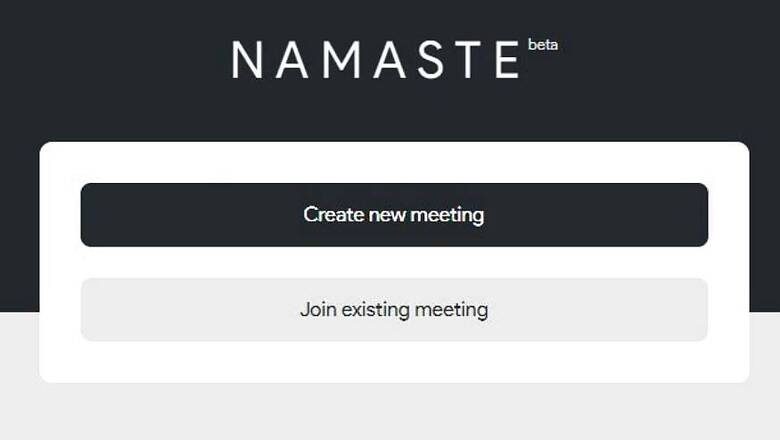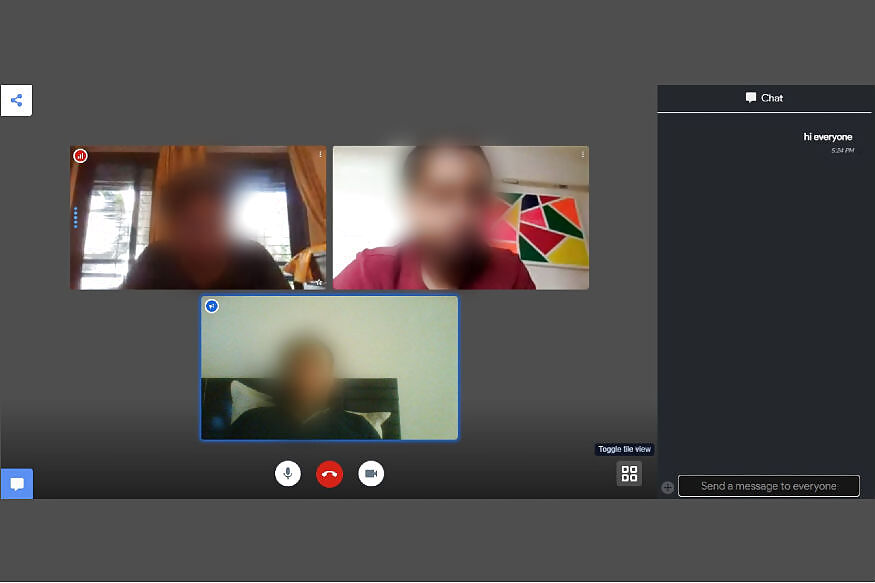
views
Over the past few days, a video conferencing service going by the name ‘Say Namaste’ started doing rounds on WhatsApp groups and Twitter circles. The service was pegged as the Indian government’s official video conferencing app, made in and for Indian users — enterprise and personal alike. This, though, is only partially true – the government's only official video conferencing service is operating by the National Informatics Centre right now, and that is not offered through smartphones or websites, and is instead reserved only for ministerial purposes.
“I had posted about publishing a pre-beta version of our own video conferencing app on my personal Facebook account. Overnight, it went viral — we were expecting a few hundred users to test our service, with most being friends and family. Instead, we are now crossing over 500,000 users within just a few days, and our service is still in beta,” says Anuj Garg, co-founder and CEO of Inscripts, the company that built Say Namaste.
NOT a government app
Garg and his team built the app in two days while working from home, in a bid to cash in on the demand for video conferencing tools during the Covid-19 work from home period. Say Namaste, he says, was a nod towards the present times of avoiding physical contact, and more importantly, Indian-ise the video conferencing tool to connect better with the audience. And connect, it did.
However, contrary to the WhatsApp messages about Say Namaste being an official app put forth by the Indian government, that is not the case. The app was built privately by Garg and his team of 50-odd developers at his Inscripts team, and there have been no interaction or inputs from the government. “It’s a positive thing, and we are happy that so many people are actually talking about us right now. We would, of course, be happy to work more closely with the government, but all of that is in the future,” says Garg.
He affirms that Say Namaste will be one of the participants in the innovation challenge hosted by the Ministry of Electronics and Information Technology (MeitY), which would award the eventual winning startup a sum of Rs 1 crore to offer its services for official government purposes. For this, and taking cues from the predicaments being faced by Zoom right now, the onus will be on Say Namaste to make its platform as secure as possible, and it is this that Garg says his focus is on now.

Focusing on safety
Garg’s expertise with communication apps come from the largely successful CometChat, which has been around for over a decade now, and offers encrypted text and communication services to organisations such as HDFC Life, Harvard University and JPMorgan Chase, among others. It is this that he aims to use for Say Namaste as well.
“In the coming days, we are hosting our first independent security audit in order to identify existing security flaws in our software. However, it’s important to note that our software is still in beta, so there will be a few persistent issues right now, all of which will be fixed upon an official launch,” says Garg.
"We are exploring how end-to-end encryption works best with our service without affecting performance, and trying different techniques for this."
As of now, Garg states that Say Namaste uses a mix of proprietary and open source technologies. “These include a number of proprietary encryption standards that we already offer to our larger customers in the banking and medical industries (through CometChat). We are still looking at multiple options in terms of the kind of encryption standard that the service will deploy. These include exploring how end-to-end encryption works best with our service without affecting performance. We are using different techniques for this, such as encrypting data packets in transit, cryptographic keys and so on,” adds Garg.
However, he says that encryption alone is not the sole answer to privacy and data security. “Beyond choosing the best possible encryption standard, access point control is something that we are exploring. We are also close to adding two-factor authentication to the app in the next few days, which would help verify participants of a video call. We can also enable directory indexing of email addresses by organisations, which can then restrict video call sessions to only a list of pre-selected email addresses, to keep intruders out of the call,” says Garg.
The latter is a feature that sounds useful for organisations, and is something that Zoom has notoriously suffered from. Say Namaste’s biggest advantage will be in not being designed as an enterprise app, and integrating its security and privacy features from the onset.
Taking on Zoom
Despite all the potential, Garg affirms that he does not want to build an all-purpose communications suite, and instead focus on simplicity of interface and ease of usage. In our own experience of the service so far, all that a user needs to do is to key in any name of their choice to generate a meeting link, with a randomly generated 10-digit meeting ID and a four-digit passcode. Participants can join one by one, and there are no waiting rooms or privacy controls that let you selectively approve users as and when they join a call. While a limit on the total number of callers has not been affirmed yet, Garg confirms that Say Namaste can already support up to 25 callers together, and in future, aims to support 100 live participants in one call.
“One of my primary testing audiences for Say Namaste was my mother, and that is the level of simplicity that I plan to establish through the app. Apart from video conferencing, the service will only come with screen sharing and file sharing. The latter is hidden right now, but will be offered through the text chat interface. But, I want to ensure that the interface remains super easy and intuitive to use, which is what many users by the bulk need right now,” said Garg.
With such an approach, Garg believes that it is unfair to compare such a startup with a service like Zoom, which is valued at billions of dollars. Say Namaste is, as of now, available only in the web app in its beta form, but has submitted its mobile apps for Android and iOS for review by Google and Apple to their respective app stores. Garg believes that a stable launch should be possible in the coming weeks, which may coincide with the timeline of Say Namaste’s smartphone apps being made live.
With the April 30 deadline of MeitY’s contest also coming up, it will be interesting to observe how Say Namaste’s journey progresses, and if it indeed matches the premonition of WhatsApp’s groups to become the official video conferencing tool of the Indian government.


















Comments
0 comment